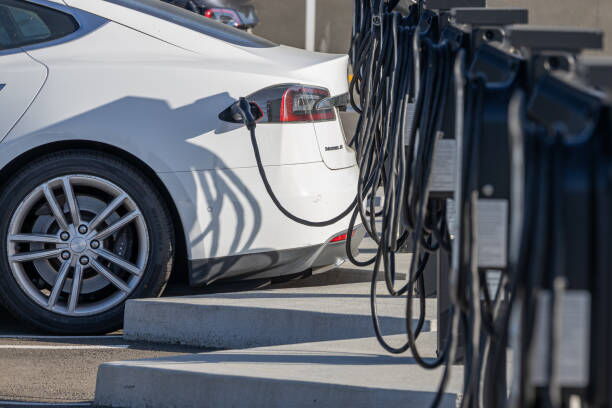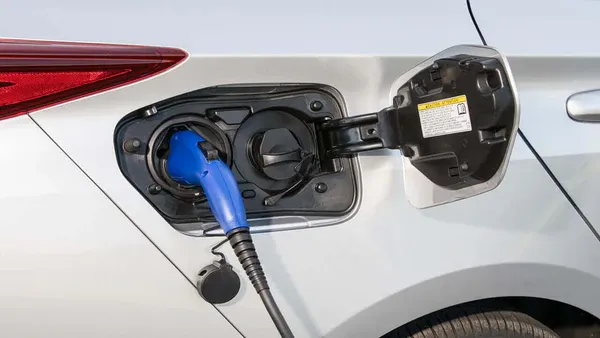As the automotive industry transitions toward sustainable energy solutions, electric vehicles (EVs) are emerging as a prominent alternative to conventional gasoline and diesel-powered vehicles. With growing concerns over environmental pollution, rising fuel costs, and the urgent need to reduce greenhouse gas emissions, EVs are rapidly gaining traction worldwide. However, understanding the different types of electric vehicles and their charging options can be confusing for new and prospective EV owners.
In this comprehensive guide, we will explore the three primary types of electric vehicles—Battery Electric Vehicles (BEVs), Plug-in Hybrid Electric Vehicles (PHEVs), and Hybrid Electric Vehicles (HEVs). We’ll also dive into the various EV charging methods, their advantages and drawbacks, and practical considerations to help you make informed decisions about EV ownership.

An electric vehicle (EV) is a type of vehicle that uses electricity to power its motor, either partially or entirely. Unlike traditional internal combustion engine (ICE) vehicles, which rely solely on gasoline or diesel, EVs use electricity stored in rechargeable batteries to drive electric motors. This fundamental difference makes EVs cleaner, quieter, and often more efficient than ICE vehicles.
EVs are classified into three main categories based on their power sources and propulsion systems:
Battery Electric Vehicles (BEVs)
Plug-in Hybrid Electric Vehicles (PHEVs)
Hybrid Electric Vehicles (HEVs)
Each type offers unique benefits and limitations, catering to different driving needs and preferences. Let’s delve deeper into each category.

Battery Electric Vehicles (BEVs), often referred to simply as EVs, are fully electric vehicles powered solely by rechargeable batteries. These vehicles do not have an internal combustion engine or any form of fossil fuel backup. Instead, all the power comes from an onboard battery pack, which drives the electric motor and powers the car’s electronics.
BEVs are true zero-emission vehicles because they produce no tailpipe emissions—no carbon dioxide, nitrogen oxides, or particulate matter. As a result, they are considered the most environmentally friendly type of EV.
BEVs operate using a straightforward mechanism:
The battery pack stores electricity, which is converted into kinetic energy to drive the electric motor.
The electric motor powers the wheels, enabling smooth and instantaneous acceleration.
Regenerative braking captures energy lost during braking and stores it back in the battery.
When the battery is depleted, it can be recharged by connecting to an external power source.
The size and capacity of the battery pack determine the vehicle’s range and performance. Larger batteries provide greater range but also increase vehicle weight and cost.
The EV market has grown significantly in recent years, with various manufacturers producing high-performance and practical BEVs. Some notable models include:
Tesla Model S, Model 3, Model X, and Model Y: Tesla’s lineup offers impressive range, rapid acceleration, and access to the Supercharger network.
Nissan Leaf: One of the most affordable and best-selling electric cars globally. It is known for reliability and practicality.
Chevrolet Bolt EV: Offers a competitive range and advanced features at a reasonable price.
Ford Mustang Mach-E: A stylish electric SUV that combines performance, range, and modern technology.
Hyundai Ioniq 5 and Kia EV6: Feature bold designs, advanced tech, and long ranges.
Zero Tailpipe Emissions: No greenhouse gases or pollutants are emitted during operation.
Lower Operating Costs: Electricity is typically cheaper than gasoline or diesel, and maintenance costs are lower due to fewer moving parts.
Quiet and Smooth Driving Experience: Electric motors deliver instant torque, providing quick acceleration and a silent ride.
Regenerative Braking: Extends range by capturing energy during braking.
Government Incentives: Many countries offer tax credits, rebates, and other incentives to promote EV adoption.
Range Anxiety: Some drivers worry about running out of charge before reaching a charging station. However, advancements in battery technology have significantly improved driving ranges.
Charging Infrastructure Limitations: Charging stations are still less common than gas stations, though networks are rapidly expanding.
Longer Refueling Time: Even fast chargers take longer than filling a gasoline tank.
Higher Upfront Cost: While EV prices are dropping, initial purchase costs can still be higher than ICE vehicles.
Plug-in Hybrid Electric Vehicles (PHEVs) are a blend of electric and gasoline vehicles, designed to offer the best of both worlds. They feature a rechargeable battery, an electric motor, and an internal combustion engine (ICE). PHEVs can operate purely on electric power for shorter trips, while the gasoline engine provides additional range for longer journeys.
PHEVs can run in different modes, depending on the situation:
Electric-Only Mode: Uses electricity stored in the battery to drive the vehicle, offering a range of 10 to 40 miles without emissions.
Hybrid Mode: Once the battery is depleted, the vehicle switches to hybrid mode, where the gasoline engine assists the electric motor.
Charge-Sustaining Mode: Automatically balances battery use and gasoline power to optimize efficiency.
Regenerative Braking: Recovers energy during braking and stores it in the battery.
The ability to recharge from the grid sets PHEVs apart from traditional hybrids, allowing drivers to cover short distances using electric power alone.
Many automakers offer PHEV models to provide drivers with flexibility and convenience. Some popular options include:
Toyota Prius Prime: Offers an electric range of around 25 miles and exceptional fuel economy.
Chevrolet Volt (discontinued but popular in the used market): Can travel up to 53 miles on electric power before switching to gasoline.
Ford Escape Plug-in Hybrid: A family-friendly SUV with a good electric range.
BMW 330e and X5 xDrive45e: Luxury plug-in hybrids with sporty performance.
Mitsubishi Outlander PHEV: The first plug-in hybrid SUV, ideal for off-road adventures.
Extended Driving Range: Can run on electricity for daily commutes and gasoline for long trips.
Reduced Fuel Consumption and Emissions: Less gasoline is used compared to conventional vehicles.
No Range Anxiety: The gasoline engine ensures the vehicle won’t run out of power.
Flexible Charging Options: Can be charged at home, at work, or at public stations.
Higher Purchase Price: More expensive than traditional hybrids and ICE vehicles.
Complex Maintenance: Dual powertrains can complicate maintenance.
Limited Electric Range: Not as eco-friendly as BEVs, as the gasoline engine still emits emissions.
Hybrid Electric Vehicles (HEVs) are often seen as a stepping stone between traditional gasoline cars and electric vehicles. They use an internal combustion engine alongside an electric motor to enhance fuel efficiency. However, unlike PHEVs and BEVs, HEVs cannot be plugged in to recharge.
The electric motor assists the gasoline engine, especially during acceleration.
Regenerative braking captures energy that would otherwise be wasted and stores it in the battery.
The vehicle automatically switches between electric and gasoline power based on driving conditions.
Toyota Prius: The pioneer of hybrid technology and a global bestseller.
Honda Insight: A compact and efficient hybrid sedan.
Hyundai Ioniq Hybrid: Offers an efficient and affordable hybrid experience.
Ford Fusion Hybrid: A stylish sedan with great fuel economy.
The rise of electric vehicles marks a significant shift in the automotive industry, offering cleaner, more efficient, and technologically advanced alternatives to traditional internal combustion engine vehicles. Understanding the differences between Battery Electric Vehicles (BEVs), Plug-in Hybrid Electric Vehicles (PHEVs), and Hybrid Electric Vehicles (HEVs) is essential for consumers to make informed decisions based on their driving habits, charging access, and environmental priorities.
BEVs represent the pinnacle of sustainable mobility, delivering zero-emission driving and lower operating costs, but they require reliable charging infrastructure and thoughtful planning for long trips. PHEVs offer a versatile solution, combining electric efficiency for short commutes with the convenience of gasoline power for extended journeys. Meanwhile, HEVs provide a familiar and efficient option for those looking to reduce fuel consumption without the need for charging.
As EV technology advances, charging options are becoming faster, more accessible, and more convenient. The expansion of charging networks, coupled with innovations in battery technology, is making EV ownership easier than ever. By embracing electric mobility, drivers can reduce their carbon footprint, save on fuel costs, and enjoy the benefits of cutting-edge technology. The future of transportation is electric—are you ready to make the switch?
